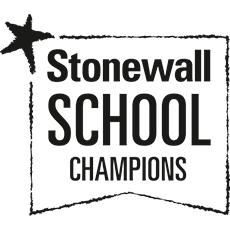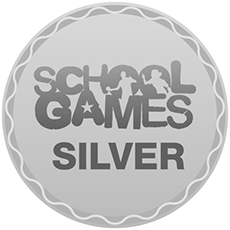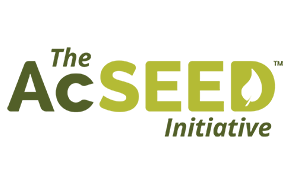Year End Targets
Year 6 Reading
I can read aloud and understand the meaning of the words on the Year 5/6 list. (Word Reading)
I can read, enjoy, understand and discuss books that are written by different authors, in different styles. I can read books that are structured in different ways for different purposes e.g. for fun or research. (Comprehension)
I can read, enjoy and understand a wide range of books, including from our literary heritage and books from other cultures and traditions. (Comprehension)
I can discuss ideas, events, structures, issues, characters and plots of the texts across a wide range of writing. (Comprehension)
I can discuss and compare themes, structures, issues, characters and plots within a book and between different books. (Comprehension)
I can read, understand and learn from a wide range of poetry and can learn longer poems by heart. (Comprehension)
I can read whole books, including novels, with confidence. (Comprehension)
I can show my understanding of texts by summarising the main ideas over a paragraph or a number of paragraphs, finding key details and quotations as evidence to support my views. (Comprehension)
I can understand how language, structure and presentation contribute to meaning of a text. (Comprehension)
I can talk about how authors use language, including figurative language and the impact it has on the reader. (Comprehension)
I can participate in discussions about books that are read to me and those that I can read, building on my own and others’ ideas and challenging views courteously and with clear reasoning. (Comprehension)
I can show my understanding of texts and poems in presentations and debates and can present information using notes I have created to help me focus on the topic in my presentation. (Comprehension)
I can fully explain my views with reasons and evidence from the text. (Comprehension)
Year 6 Writing
I can add suffixes beginning with vowel letters to words ending in -fer e.g. referring, preferred, referee, preference. (Spelling)
I can use prefixes involving the use of a hyphen e.g. co-ordinate, re-enter. (Spelling)
I can distinguish between words which sound the same but have different meanings and other words which are often confused e.g. lose/loose. (Spelling)
I can use dictionaries to check the spelling and meaning of words. (Spelling)
I can spell most words correctly including words that are often misspelt. (Spelling)
I can use a dictionary to check the spelling of less common or interesting words I want to use. (Spelling)
I can use knowledge of root words, prefixes and suffixes in spelling and understand that the spelling of some words needs to be learnt specifically. (Spelling)
I can use a thesaurus with confidence. (Spelling)
I can write legibly, fluently and with increasing speed, deciding whether or not to join specific letters. (Handwriting)
I can write legibly, fluently and with increasing speed by choosing the writing implement that is best suited for a task. (Handwriting)
I can change my writing to fit the audience and change the language and sentence length for the purpose. (Composition)
I can plan my writing by recording my first thoughts and building on those ideas using what I have read or need to find out about as necessary. (Composition)
I can plan a detailed character and / or setting to have an effect on the reader and use ideas from what I have read, heard and seen in other stories, plays or films. (Composition)
I can write effectively for a range of purposes and audiences, independently using ideas from my own reading. (Composition)
I can use grammar and vocabulary which is suited to the purpose of my writing. (Composition)
I can write pieces describing settings, characters and atmosphere. (Composition)
I can include dialogue in my writing to convey character and advance the action. (Composition)
I can draft and write by accurately précising longer passages. (Composition)
I can use different techniques to make my writing flow and link paragraphs. (Composition)
I can set out my work using headings, sub-headings, columns, tables or bullet points to structure the text and to guide the reader. (Composition)
I can give reasoned feedback on mine and others’ work to improve it. (Composition)
I can give reasoned feedback on a text and suggest changes to vocabulary, grammar and punctuation to make the meaning clearer. (Composition)
I can mark and edit work to have the correct tense throughout. (Composition)
I can mark and edit work to have the correct subject and verb agreement. (Composition)
I recognise differences between the language of speech and writing and can choose sensibly. (Composition)
I can read work looking for spelling errors and correct them using a dictionary. (Composition)
I can proof-read for punctuation errors, including use of semi-colons, colons, dashes, punctuation of bullet points in lists, use of hyphens. (Composition)
I can confidently perform my own work to a group and make sure it sounds interesting, controlling the tone and volume so that its meaning is clear. (Composition)
I can change the vocabulary to suit the purpose such as using formal and informal language appropriately in my writing. (Vocabulary, Grammar and Punctuation)
I can understand how words are related by meaning as synonyms and antonyms. (Vocabulary, Grammar and Punctuation)
I can use the passive to affect the presentation of information in a sentence. (Vocabulary, Grammar and Punctuation)
I can understand the difference between structures typical of informal speech and structures appropriate for formal speech and writing. (Vocabulary, Grammar and Punctuation)
I can manage shifts in formality by using a range of formal and informal vocabulary and grammatical structures consistently and effectively to match particular audiences and purposes. (Vocabulary, Grammar and Punctuation)
I can link ideas within and across paragraphs using a wide range of cohesive devices such as repetition of a word or phrase, grammatical connections and ellipsis. (Vocabulary, Grammar and Punctuation)
I can use layout devices such as headings, sub-headings, columns, bullets, or tables, to structure text. (Vocabulary, Grammar and Punctuation)
I can use the semi-colon, colon and dash to mark the boundary between independent clauses and in lists e.g. It’s raining; I’m fed up. (Vocabulary, Grammar and Punctuation)
I can use the colon to introduce a list and use semi-colons within lists. (Vocabulary, Grammar and Punctuation)
I can use bullet points to list information. (Vocabulary, Grammar and Punctuation)
I can use hyphens for clarity e.g. man eating shark or man-eating shark. (Vocabulary, Grammar and Punctuation)
I can understand the following words: subject, object, active, passive, synonym antonym, ellipsis, hyphen, colon, semi-colon and bullet points. (Vocabulary, Grammar and Punctuation)
I can use the perfect form of verbs to mark relationships of time and cause. (Vocabulary, Grammar and Punctuation)
I can use expanded noun phrases to explain complicated information simply. (Vocabulary, Grammar and Punctuation)
I can use the full range of punctuation I have been taught to enhance meaning and avoid ambiguity. (Vocabulary, Grammar and Punctuation)
Year 6 Maths
I can read, write, order and compare numbers to at least 10,000,000 (ten million) and say the value of each digit. (Number and Place Value)
I can round any number to a required degree of accuracy. (Number and Place Value)
I can use negative numbers in context when looking at temperature or money; counting in jumps forwards and backwards through 0. (Number and Place Value)
I can solve number and practical problems that involve ordering and comparing numbers to 10 000 000, rounding to a required degree of accuracy, using negative numbers and calculating intervals across zero. (Number and Place Value)
I can show an understanding of place value including decimals. (Number and Place Value)
I can mentally calculate using a mix of the four operations. (Addition and Subtraction)
I can solve problems with more than one step and operation and explain why I used them. (Addition and Subtraction)
I can solve addition and subtraction word and practical problems. (Addition and Subtraction)
I can use estimation to check answers to calculations and determine an appropriate degree of accuracy. (Addition and Subtraction)
I can multiply numbers of up to 4 digits by a two-digit number using a formal written method. (Multiplication and Division)
I can divide numbers of up to 4 digits by a two-digit number using a formal written method of long division, showing remainders, fractions or rounding as appropriate. (Multiplication and Division)
I can divide numbers of up to 4 digits by a two-digit number using a formal written method of short division, showing remainders, fractions or rounding as appropriate. (Multiplication and Division)
I can mentally calculate using a mix of the four operations and increasingly large numbers. (Multiplication and Division)
I can identify common factors, multiples and prime numbers. (Multiplication and Division)
I can use the order of importance of the four operations when answering questions. (Multiplication and Division)
I can solve addition and subtraction multi-step problems, deciding which operations and methods to use and explain why they were suitable. (Multiplication and Division)
I can solve problems involving addition, subtraction, multiplication and division. (Multiplication and Division)
I can use estimating to check answers and problem solving. (Multiplication and Division)
I can use common factors and multiples to simplify fractions and express fractions in the same denomination. (Fractions)
I can compare and order fractions including those > 1. (Fractions)
I can add and subtract fractions with different denominators and mixed numbers. (Fractions)
I can multiply simple pairs of proper fractions, writing the answer in the simplest form such as 1/4 x 1/2 = 1/8. (Fractions)
I can divide proper fractions by whole numbers such as 1/3 ÷ 2 = 1/6. (Fractions)
I can link a fraction with division and work out decimal fractions such as knowing that 7 divided by 21 is the same as 7/21 and that this is equal to 1/3, and 0.378 is 3/8 as a simple fraction. (Fractions)
I can explain the place value of any digit in a number with up to 3 decimal places and multiply or divide these by 10, 100 or 1000. (Fractions)
I can multiply numbers less than 10 with up to 2 decimal places by whole numbers. (Fractions)
I can use written division methods for numbers with up to two decimal places. (Fractions)
I can solve problems which require answers to be rounded to specified degrees of accuracy. (Fractions)
I can use equivalences between simple fractions, decimals and percentages to help me solve problems. (Fractions)
I can solve problems involving the calculation and conversion of units of measure, using decimal notation up to three places if I need to. (Measurement)
I can use, read, write and convert between standard units. I can convert measurement of length, mass, volume and time from a smaller unit to a larger unit and vice versa. I can do this using decimal notation up to the three decimal places. (Measurement)
I can convert between miles and kilometres. (Measurement)
I can recognise that shapes with the same areas can have different perimeters and vice versa. (Measurement)
I can recognise when it is possible to use formulae to find the areas or volumes of shapes. (Measurement)
I can calculate the areas of parallelograms and triangles. (Measurement)
I can calculate, estimate and compare volumes of cubes and cuboids using standard units, including cubic centimetres (cm³),cubic metres (m³). I can extend this to other units e.g. mm³ and km³. (Measurement)
I can draw 2-D shapes using dimensions and angles I am given. (Properties of Shape)
I can recognise, describe and build simple 3-D shapes, including making nets. (Properties of Shape)
I can compare and classify geometric shapes based on their properties and sizes. I can also find unknown angles in any triangles, quadrilaterals or regular polygons. (Properties of Shape)
I can illustrate and name parts of circles, including radius, diameter and circumference. I know that the diameter is twice the radius. (Properties of Shape)
I can recognise angles where they meet at a point, are on a straight line or are vertically opposite. I can then find any missing angles. (Properties of Shape)
I can describe positions in all four quadrants on a full coordinate graph. (Position and Direction)
I can draw and translate simple shapes on the coordinate plane and reflect these in the axis. (Position and Direction)
I can interpret and construct pie charts and line graphs. I can use these to solve problems. (Statistics)
I can calculate and interpret the mean as an average. (Statistics)
I can solve problems that involve the relative sizes of two things where the missing number can be found by multiplying or dividing by whole numbers. (Ratio and Proportion)
I can solve problems involving the calculation of percentages. I can also use percentages for comparisons. (Ratio and Proportion)
I can solve problems involving shapes where the scale factor is known or can be found. (Ratio and Proportion)
I can solve problems involving unequal sharing and grouping. I can use my knowledge of fractions and multiples to do this. (Ratio and Proportion)
I can use simple formulae. (Algebra)
I can create and describe linear number sequences. (Algebra)
I can record missing number problems algebraically. (Algebra)
I can find pairs of numbers which complete an equation with two unknowns. (Algebra)
I can create a list of possibilities of the combination of two variables. (Algebra)






